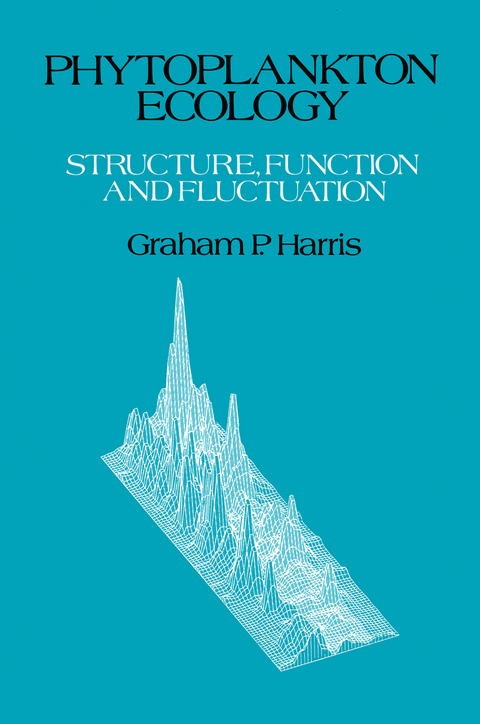
Phytoplankton Ecology
Springer (Verlag)
978-94-010-8310-2 (ISBN)
1 Preamble.- 1.1 A brief introduction to the organisms.- 2 Ecological theory.- 2.1 An historical perspective: the concept of plenitude.- 2.2 Ecology and evolution.- 2.3 Equilibrium theory.- 2.4 The equilibrium theory of community structure.- 2.5 Criticisms of equilibrium theory.- 2.6 Non-equilibrium theory.- 2.7 Some ideas from non-equilibrium thermodynamics.- 3 Some basic physics.- 3.1 Scales of turbulent kinetic energy generation.- 3.2 The physics of surface waters.- 4 The chemical environment.- 4.1 The Redfield ratio.- 4.2 The major ions.- 4.3 The major nutrients.- 5 Defining the scales of interest.- 5.1 Patchiness in space and time.- 5.2 The biological response to variability in space and time.- 5.3 Models of competition between phytoplankton.- 6 The measurement of productivity and growth rates.- 6.1 The interpretation of kinetic measurements.- 6.2 The integration of metabolic pathways.- 6.3 Time scales and the effects of bottle containment.- 6.4 From kinetics to growth rates?.- 7 The concept of limiting nutrients.- 7.1 Rate processes in oligotrophic waters.- 7.2 The cycling of N and P in lakes and the oceans.- 7.3 Nutrient cycling, elemental ratios and the ‘Redfield ratio’.- 7.4 Patterns in temporal fluctuations.- 7.5 Whole basin averages.- 8 Physiological scales: non-steady state conditions in the field.- 8.1 The effects of environmental variability on growth rates.- 8.2 Energy, nutrients and cell size: a synthesis.- 9 Seasonal patterns of distribution and abundance.- 9.1 Spatial distribution of biomass.- 9.2 The seasonal cycle of phytoplankton growth.- 9.3 Manipulation of the seasonal cycle of biomass.- 9.4 The influence of mixed layer physics on biomass distributions.- 9.5 Ecological succession.- 9.6 The seasonal succession and community structure ofphytoplankton.- 9.7 Sampling and counting problems: time and space scales.- 9.8 The seasonal successions of species: the ideal sequences.- 9.9 Nutrient ratios and the role of competition.- 10 Community structure and function in turbulent environments.- 10.1 Processes in phytoplankton successions.- 10.2 Structural trends in succession.- 10.3 Rates of succession.- 10.4 Succession in turbulent mixed layers.- 10.5 Manipulation of the species composition.- 10.6 Biomanipulation.- 11 Large number systems: empiricism.- 11.1 Observations of ecological diversity.- 11.2 Predictions of the distribution and occurrence of species.- 11.3 Phosphorus loadings and algal biomass.- 11.4 Manipulation of algal biomass.- 11.5 Phosphorus loadings and hypolimnial anoxia.- 11.6 Phosphorus loadings and the biomass of other organisms in the food chain.- 11.7 Size distributions in food chains.- 11.8 Phytoplankton biomass and fish production.- 12 Interannual variability.- 12.1 Long-term changes in phytoplankton abundance.- References.
| Zusatzinfo | XII, 384 p. |
|---|---|
| Verlagsort | Dordrecht |
| Sprache | englisch |
| Maße | 155 x 235 mm |
| Themenwelt | Schulbuch / Wörterbuch |
| Naturwissenschaften ► Biologie ► Botanik | |
| Naturwissenschaften ► Biologie ► Limnologie / Meeresbiologie | |
| Naturwissenschaften ► Biologie ► Ökologie / Naturschutz | |
| Sozialwissenschaften | |
| ISBN-10 | 94-010-8310-X / 940108310X |
| ISBN-13 | 978-94-010-8310-2 / 9789401083102 |
| Zustand | Neuware |
| Haben Sie eine Frage zum Produkt? |
aus dem Bereich


